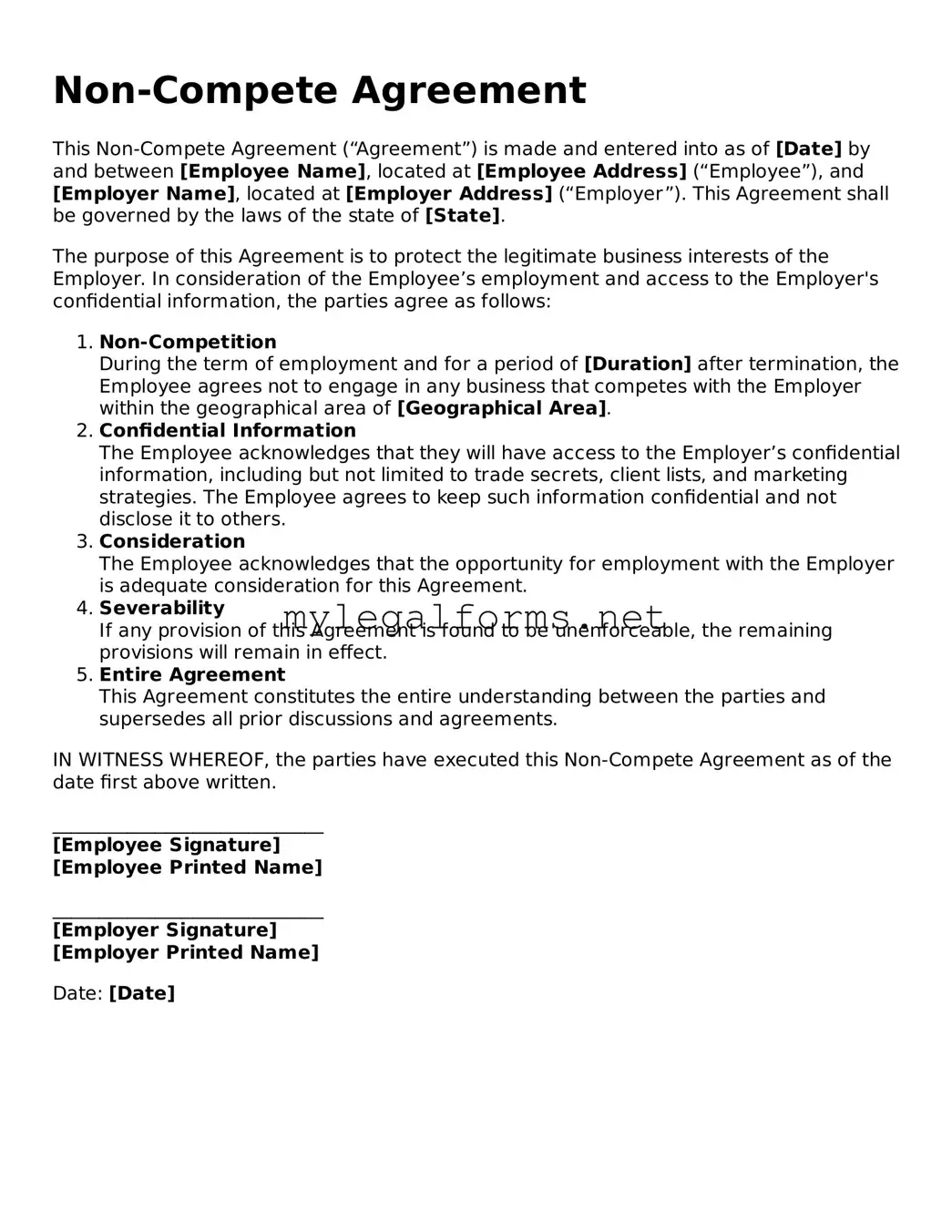When filling out a Non-compete Agreement form, individuals often overlook critical details that can lead to complications down the line. One common mistake is failing to read the entire document thoroughly. Many people skim through the text, missing essential clauses that could affect their rights and obligations. Understanding every provision is crucial to avoid unintended consequences.
Another frequent error is not clearly defining the scope of the non-compete. Individuals sometimes agree to overly broad terms that restrict their ability to work in their field. It’s important to ensure that the geographical area and time frame specified in the agreement are reasonable and tailored to the specific circumstances of employment.
People often neglect to consider the implications of signing the agreement. They may not fully grasp how it could impact future job opportunities. Before signing, it’s wise to reflect on career goals and the potential limitations the agreement may impose.
Some individuals fail to seek legal advice before signing. Consulting with a legal expert can provide clarity and help negotiate terms that are more favorable. Without this guidance, one might inadvertently agree to terms that are not in their best interest.
In addition, many do not keep a copy of the signed agreement. Retaining a copy is essential for reference in case disputes arise later. Without a personal record, it can be challenging to recall the exact terms of the agreement.
Another mistake is not understanding the consequences of a breach. Individuals may not realize that violating the agreement can lead to legal action, financial penalties, or damage to their professional reputation. Awareness of these risks is vital when considering whether to sign.
Some people also overlook the importance of timing when signing the agreement. Signing under pressure or without adequate time to think can lead to regret later. Taking the time to review the document and consider its implications is a wise approach.
Moreover, individuals sometimes assume that the agreement will not be enforced. This belief can lead to complacency. In reality, many employers take these agreements seriously and will pursue legal action if they believe a breach has occurred.
Lastly, failing to negotiate terms is a common pitfall. Many individuals accept the agreement as-is without attempting to discuss modifications. Negotiating for more favorable terms can make a significant difference in one’s career trajectory.
